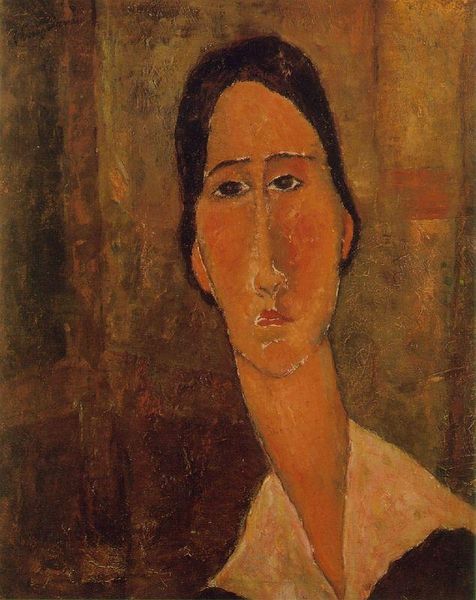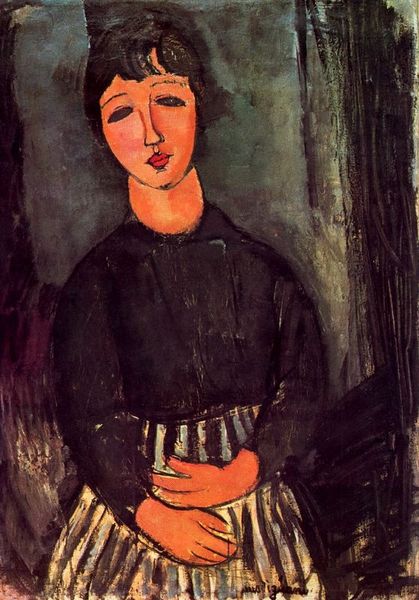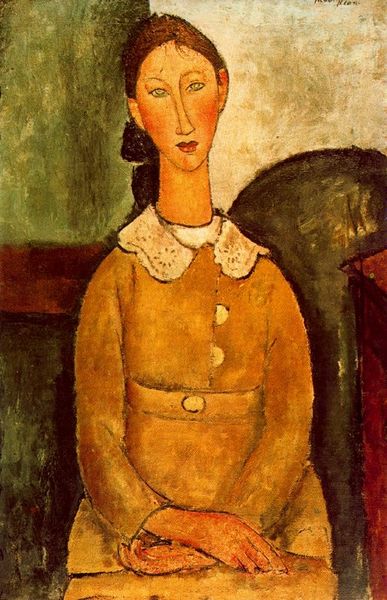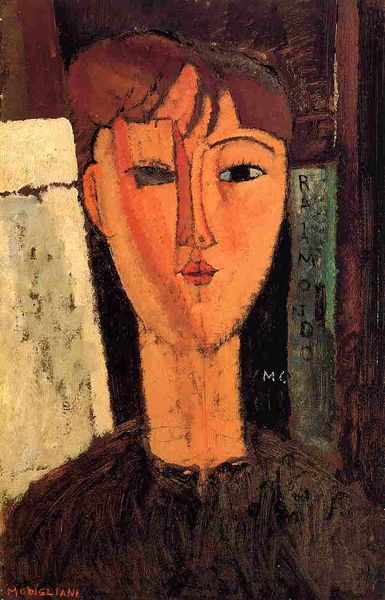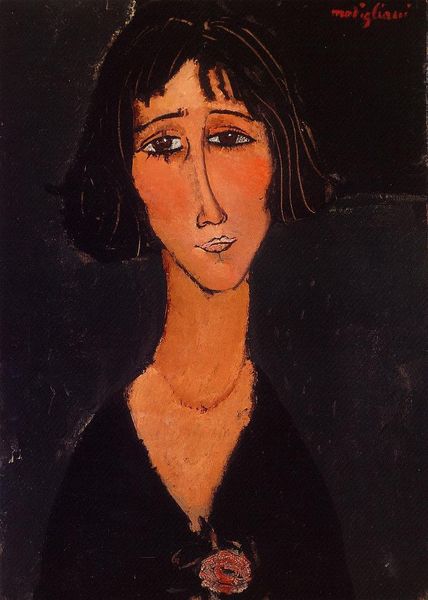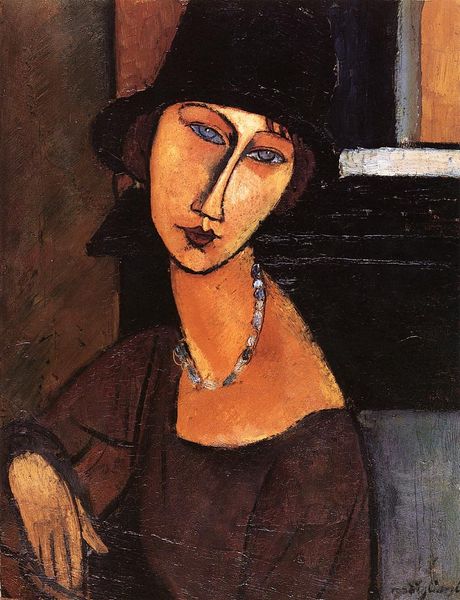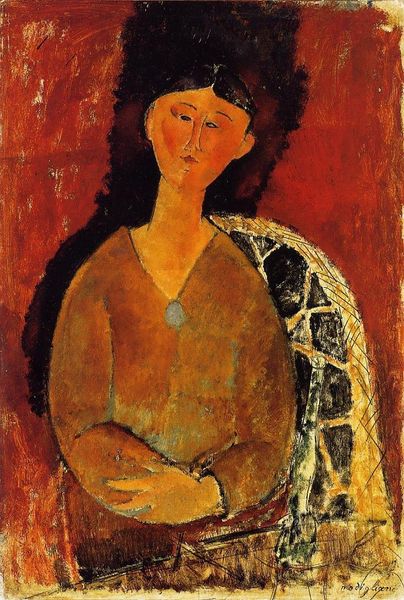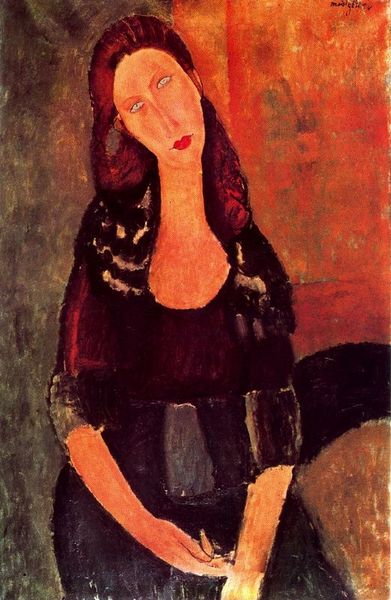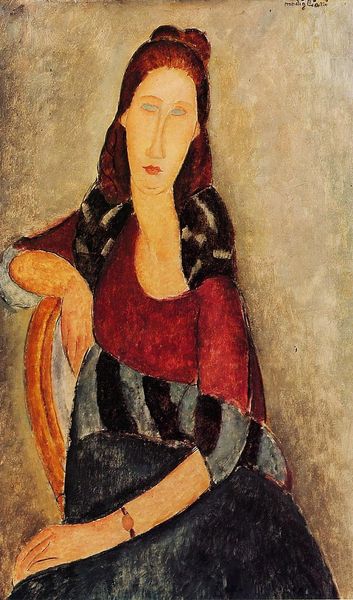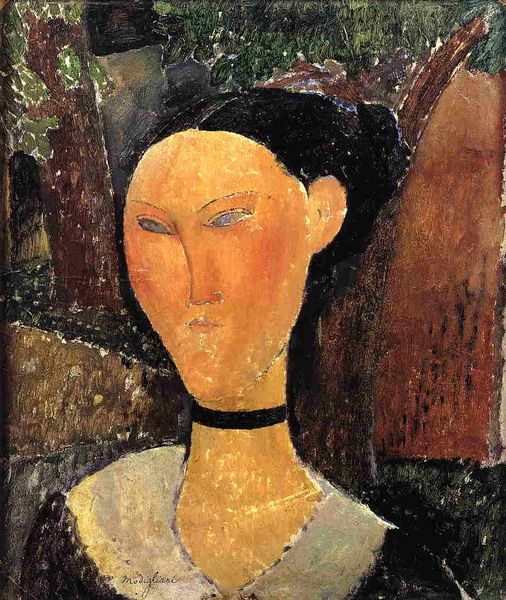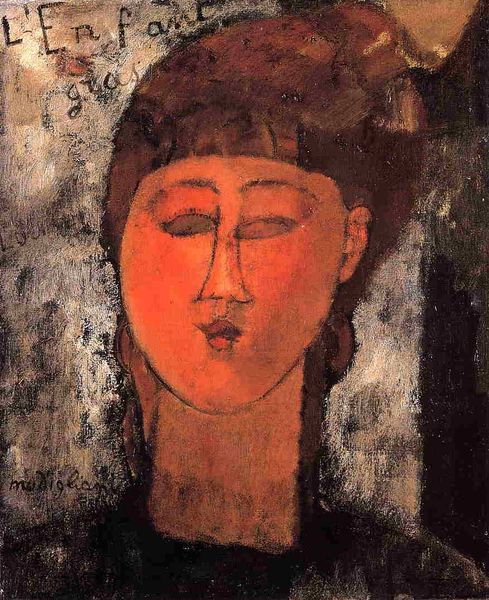
painting, oil-paint
#
portrait
#
painting
#
oil-paint
#
figuration
#
oil painting
#
expressionism
#
modernism
Dimensions: 81 x 54 cm
Copyright: Public domain
Editor: This is Amedeo Modigliani's "Portrait of Beatrice Hastings," painted in 1915. I'm struck by how he's elongated her neck and face. What's the story behind this portrait, and how does it fit into the artistic and social landscape of its time? Curator: Modigliani painted several portraits of Beatrice Hastings, who was his lover and a prominent writer and art critic. This particular work really exemplifies his distinctive style. Look at how he uses simplification and distortion, drawing from both African masks and the stylized figures of Italian Renaissance art. But beyond the formal aspects, consider the position of women in Parisian artistic circles. Hastings was an intellectual force, but the male gaze still dominated artistic representations. Does Modigliani's portrait challenge or reinforce these power dynamics? Editor: That's a really interesting point. It feels almost like he’s idealizing her in a way that also flattens her. Do you think the lack of pupils in her eyes contributes to that sense of objectification? Curator: Absolutely. It can be read that way. However, it is crucial to consider the prevalent artistic trends of the time. Many artists were experimenting with abstraction and rejecting traditional modes of representation. This portrait reflects a push against academic realism, aligning with broader modernist aims of disrupting established social and artistic norms. Perhaps, this stylization points towards an intention to represent an internal reality more than an accurate portrayal of the external form. What do you make of that argument? Editor: I guess I hadn't considered that. Seeing it as an active challenge to the norm, rather than passive reflection makes a difference. I still wonder what Beatrice Hastings would have thought of it! Curator: Exactly! Engaging with those unanswered questions makes experiencing the painting a relevant critical act.
Comments
No comments
Be the first to comment and join the conversation on the ultimate creative platform.

